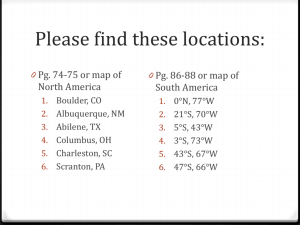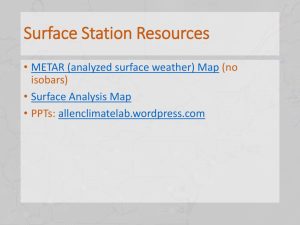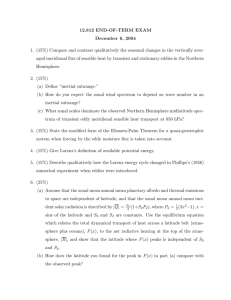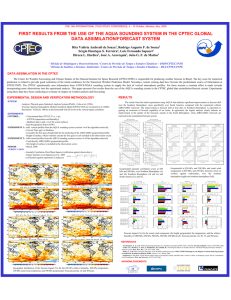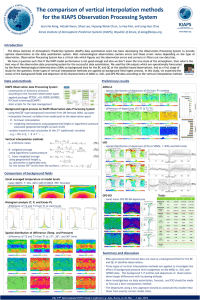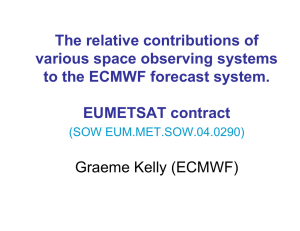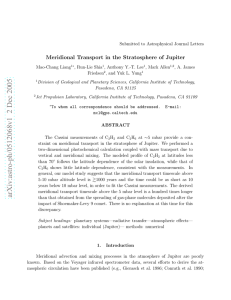GEF3450 Exercises for group session: Midterm practice Ada Gjermundsen E-mail:
advertisement
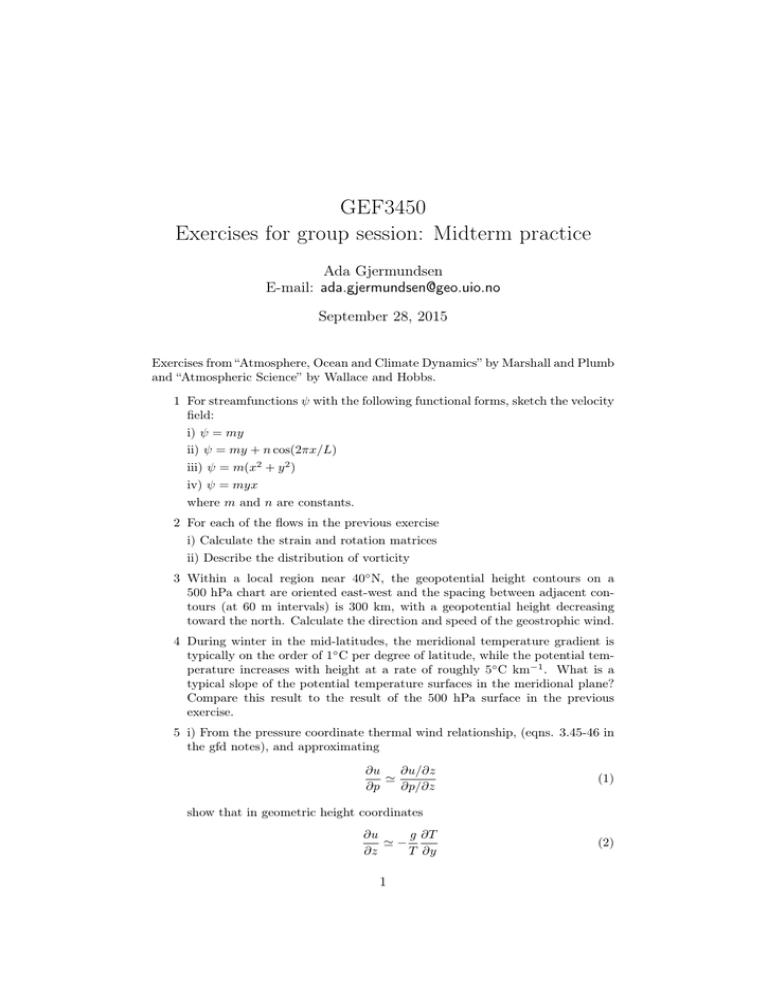
GEF3450 Exercises for group session: Midterm practice Ada Gjermundsen E-mail: ada.gjermundsen@geo.uio.no September 28, 2015 Exercises from “Atmosphere, Ocean and Climate Dynamics” by Marshall and Plumb and “Atmospheric Science” by Wallace and Hobbs. 1 For streamfunctions ψ with the following functional forms, sketch the velocity field: i) ψ = my ii) ψ = my + n cos(2πx/L) iii) ψ = m(x2 + y 2 ) iv) ψ = myx where m and n are constants. 2 For each of the flows in the previous exercise i) Calculate the strain and rotation matrices ii) Describe the distribution of vorticity 3 Within a local region near 40◦ N, the geopotential height contours on a 500 hPa chart are oriented east-west and the spacing between adjacent contours (at 60 m intervals) is 300 km, with a geopotential height decreasing toward the north. Calculate the direction and speed of the geostrophic wind. 4 During winter in the mid-latitudes, the meridional temperature gradient is typically on the order of 1◦ C per degree of latitude, while the potential temperature increases with height at a rate of roughly 5◦ C km−1 . What is a typical slope of the potential temperature surfaces in the meridional plane? Compare this result to the result of the 500 hPa surface in the previous exercise. 5 i) From the pressure coordinate thermal wind relationship, (eqns. 3.45-46 in the gfd notes), and approximating ∂u ∂u/∂z ' ∂p ∂p/∂z (1) show that in geometric height coordinates ∂u g ∂T '− ∂z T ∂y 1 (2) ii) The winter polar stratosphere is dominated by the “polar vortex”, a strong westerly circulation about 60◦ latitude around the cold pole, as depicted schematically in the figure on the next page. (This circulation is the subject of considerable interest, because it is within the polar vortices - especially that over Antarctica in the southern winter and spring - that most of the ozone depletion is taking place.) Assuming that the temperature at the pole is (at all heights) 50 K colder at 80◦ latitude than at 40◦ latitude (and that it varies uniformly in between), and that the westerly wind speed at 100 hPa pressure at 60◦ latitude is 10 ms−1 , use the thermal wind relation to estimate the wind speed at 1 hPa pressure at 60◦ latitude. (you need the gas constant for air = 287 Jkg−1 K). 2

